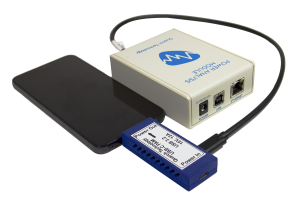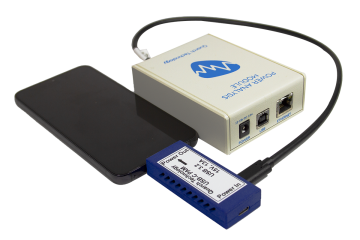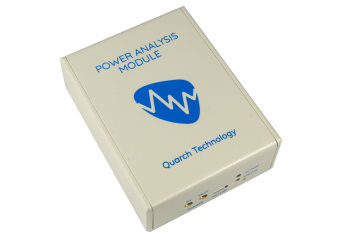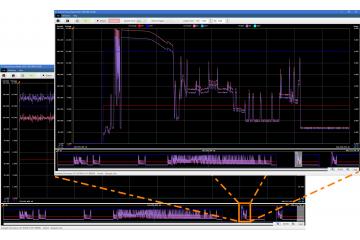
Andy Norrie
USB-C Power – Every trace tells a story

There are many options for power measurement, and getting the right balance of features, accuracy, automation, and usability is a tricky balance.
A cheap analyser from Amazon can cost from $15-$100 USD, and do a fair bit for the price. Its quick to set up, gives a clear indication of power use, and can have a range of additional debug features.

These are very much for the hobbyist, though they come with little certainty over their quality and will not be calibrated or trusted for important measurements.
An oscilloscope and current probes are a world away in terms of sample rate and accuracy but are vastly more expensive. The current probes will require custom wiring and a complex setup to get into the path, and automation may be rather basic. A decent basic setup could easily cost $15k USD
For commercial needs, power analysis requires:
- Consistent, accurate measurements, backed by calibration
- Simple test fixturing
- Sample rates well above 1000 samples per second
- Long-term recording to cover charge/discharge cycles and longer workloads
- High-quality software tools
- Simple automation options
Today’s test setup
I’m playing with the new USB-C PAM prototype from Quarch. This is an interposer-based device that can measure power and tap the USB-C sidebands. Its a lot cheaper and easier to use than a scope but also fully calibrated and with powerful software and automation included.
It fits between the USB-C cable and the device we are testing. This test is on my Samsung S22 phone.
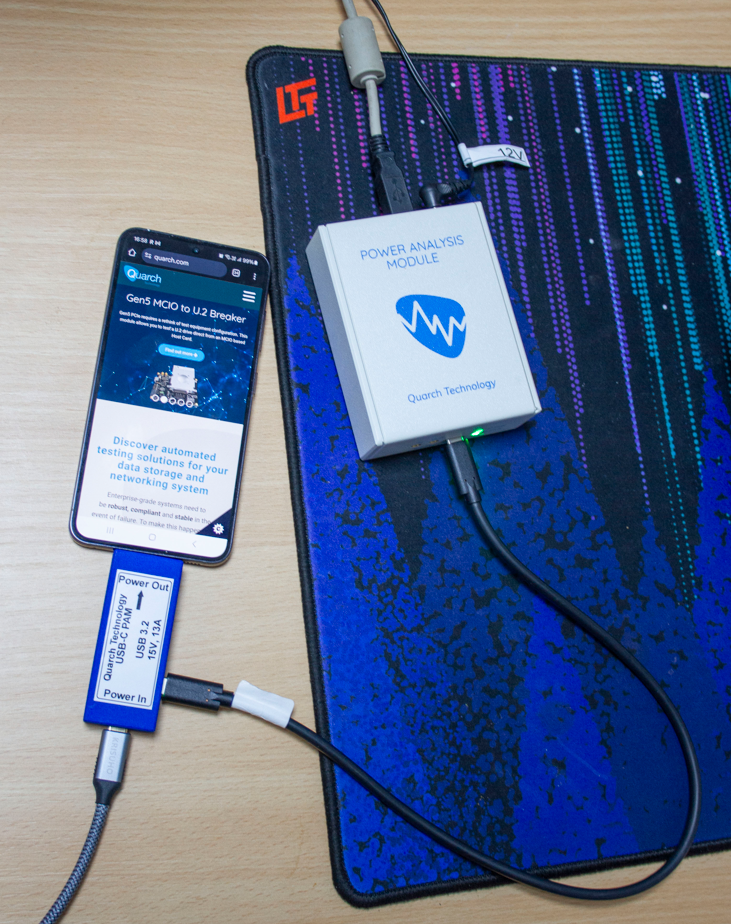
What do you want to see?
Every trace tells a story; let’s look at one of the first I took. This is using the USB-C charger from my Dell laptop, plugged into a Samsung S22 phone.
This is a decent charger, but its quite old and does not support newer charging standards.
The brown trace is the voltage, and purple is power. We’re zoomed into the point where the device and charger are negotiating to move from 5v to 9v. It takes about 150mS for the transition, and the phone spiked up in current briefly, pulling the voltage down.

We can also see the charger is not very stable, with about 150mV of oscillation even before the power picks up. It takes 275mS from power connection until we start to ramp up to 9 volts.
We can also see the purple power traces are quite noisy, with a lot of movement. There is a clear trend to jump up and then slowly decrease over time, though.

Now lets look at the same phone, attached to an Anker 757 USB-C charging port. This unit supports 100W IQ3 charging, we we should expect to see differences.
The time to negotiate 9 volts is a little faster at 177mS. The big difference is that the up ramp is vastly quicker at 6mS and there is far less fluctuation in the voltage, with a very clean output, even under load.

Note that in both cases, the phone does not draw much current initially; it clearly waits and negotiates with the charger, then begins to take power.
The communication with the Anker unit is more detailed, due to the more sophisticated I3 communication standard.
I tried the newer Anker Solis 1000 as well, which had similar results, though interestingly, this unit is a little slower to ramp up but otherwise very similar.
We can see it boosts voltage in clear steps of 500mV in 1mS intervals (except for the final step, which is always slower!).

After the voltage has ramped up, the charge current also ramp in clear steps, every 200mS. Each step is around 400 mW.

Here is a quick summary: all 3 chargers were able to charge the phone at around 13 watts (it was around 85% charged, so we can expect it to be fairly slow charging).

How does this help you?
The Quarch tool can be used to analyse a device in detail. For an engineer, this can help debug issues or optimize the design of a product.
For test labs, it can allow you to understand if a product meets its claimed specification. With high competition and cheap prices, many battery banks and chargers are not quite what they claim to be.
The USB-C PAM can be used for quick bench tests or long-term automated capture. Its based on the same proven technology used in our award-winning SSD analysis tools, which are used across the storage industry.
What else can you test with this?
USB-C is everywhere; vast numbers of consumer and complex industrial devices exist, and power performance is a key priority for most of them.
- Capacity and output performance of USB battery packs
- Charging performance of phone, tablets, laptops and smartwatches
- Application power usage on phones
- Power performance of USB-C SSDs
- Scientific and medical instruments
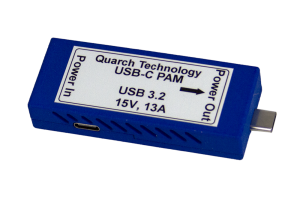
USB-C Power Analysis Module Contact your local reseller or email support@quarch.com to get started!

